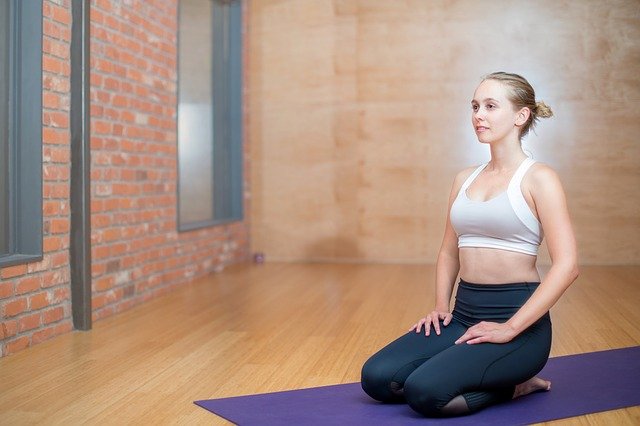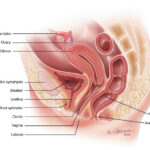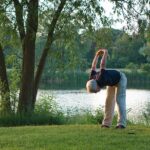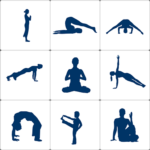Dear Annie, I have a grade 3 uterine prolapse that is getting progressively worse. I do yoga 6 days a week but am concerned my practice may be making the prolapse worse by overstraining & holding my breath in some practices. I need some guidance on which āsana or physical postures to avoid & which āsana to do more of. Thank you.
Great question! There are two answers, one short answer, the other longer and more detailed. But before we get into working with yoga as therapy, let’s begin with an understanding of the prolapse.
About Uterine Prolapse
When the physical structure of the uterus slips forward or downward into the vagina, it is called a Utero-Vaginal or uterine prolapse. This often happens when the ligaments that hold the uterus in place are stretched and weakened. The pelvic floor is almost always involved.
The pelvic floor is a grouping of supportive muscles and ligaments that make up a platform or hammock to hold your pelvic organs in place. A strong pelvic floor usually sits higher and provides more stability, while a weak one sits lower and provides less support.
Further, there is a network of muscles, facia, and tendons in the abdomen that “lift” the organs. This creates a sort of suspension system that provides additional support for the area. A prolapse happens when a part of the system becomes weakened or damaged and organs begin to slip out of place, usually down through the vagina.
Tense and contracted abdominal tendons can cause a prolapse.
Medical professionals usually find the pelvic floor, along with the ligaments and tendons to be weak, or lax, in cases of progressed prolapse. But that’s not always the case. A prolapse can also happen when the network, and facia designed to lift these organs, become overly tense or contracted. Excess contraction or constriction causes a loss of flexibility and stability. When this happens, there is no longer enough length or room in the abdomen for things to stay in place and the uterus is sort of “pushed downward.”
See Natural Solutions for Pelvic Organ Prolapse for more information
Stages of Uterine Prolapse
Uterine prolapse is measured in 4 stages.
- Stage 1- A mild prolapse. the uterus has dropped into the upper part of the vagina.
- Stage 2 – The prolapse has worsened, descending toward the opening of the vagina.
- Stage 3 – The uterus has fallen beyond the outside of the vagina.
- Stage 4 – The uterus is completely outside the vagina.
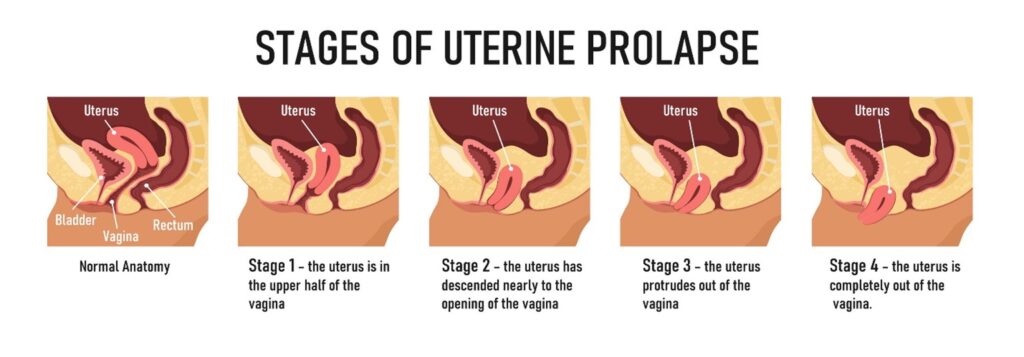
Each stage is cause for increasing concern. As the problem progresses, many women feel increasingly powerless. Some, out of desperation, engage in tools and exercises without understanding how to implement them properly. Unfortunately, this often leads to over-exertion, which can make the prolapse worse.
The Short Answer – What type of yoga āsana is best to reverse uterine prolapse?
Yoga can be very helpful when dealing with uterine prolapse, (as well as other abdominal organ prolapse). That being said, all yoga practices, including the physical postures (āsana) are individualized and personal. They are not prescriptive. Yoga is more than moving and stretching. Yoga is about working with prāņa (life’s universal animating force). It is a holistic practice that sees everyone and their situation as distinctive and unique. As a result, some practices or poses may be beneficial for one person and harmful to another.
Strong practices, like holding the breath and overstraining can impact the body in seemingly unexpected ways. It is possible that holding the breath and straining may add to, or even caused the uterus to prolapse. This is not an unusual situation.
The best advice I can give is to connect with a qualified yoga therapist or yoga teacher. They will be able to help you develop an appropriate practice that brings your system back into harmony.
The Longer Answer – How yoga can be applied to improve or reverse uterine prolapse?
To use yoga practices as a treatment for uterine prolapse, we must first understand how yoga views the human body. Yoga is not based in the western model of medicine. It is an ancient, deeply-rich modality, based on East Indian philosophy and anatomy.
Yoga sees the human body as a living structure to house prāņa. Prāņa, the universal life force, permeates every part of the system, animating our physical biology and supporting all life functions. As an expression of consciousness, this energy has an intelligence beyond what most people understand as their body, mind and emotions. (Read more about prāņa here)
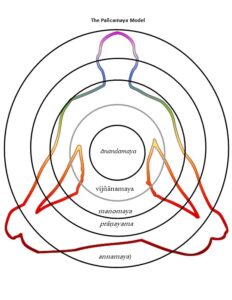
When a physical problem develops, yoga views the problem as a disruption in the flow of prāņa. This disruption can be caused by several things but usually manifests as a blockage or agitation. That means, the energy of life is not flowing easily or smoothly to the parts of your system where you’re having trouble.
Prāņa is strongly influenced by, breath, attention, and liquid. When āsana, or the physical poses are performed in relation to breath, attention is brought into the practice. When movement, breath, and attention are all present, life’s energy becomes more potent. When prāņa flows and fills the system smoothly, everything operates more efficiently, and health improves.
What poses are helpful to relieve uterine prolapse?
This is a good question. Each person is individual. Each body, mind and situation are unique. Rather than giving a list of physical poses to relieve prolapse, let’s talk about some general ideas to keep in mind as you practice.
Healing is the first step. In yoga, the application of tools for healing is called cikitsā (pronounced chikitsa). Building on a weak foundation makes for an unsteady house. Therefore, we must heal and restore proper functioning before we can proceed.
Prāņa does not respond to force. It’s more like a river or irrigation system. When obstacles are removed, prāņa flows to fill the space. When prāņa fills the space and is flowing smoothly, the physical structure responds in predictably positive ways.
Start easy and move slowly. This may not look like the kind of practice you’re used to. It’s ok. Everything changes, moves, and comes again. When using yoga as a healing modality for your uterine prolapse:
- Rest and restore – Take the time your body needs to release tension.
- Intentionally build practices to restore prāņa
- Let breath and attention lead the way in your poses and other practices.
- Go easy on yourself – it took time to get where you are and will take time to resolve.
Example Practice
Disclaimer – This practice is not meant to be prescriptive and is not meant for everyone. It is one example of the type of practice that may be used as a starting point for someone working with a 3rd degree uterine prolapse.

- Legs up the wall (or a chair) – Prop your hips gently on a blanket or pillow with legs up the wall or feet resting comfortably on a chair. Apply warm oil to the abdomen using long, gentle, upward moving strokes. While in this pose, gently focus on a ball of light expanding in the center of the chest as you inhale. As you exhale, bring gentle attention to the lower abdomen approximately 2 inches above the pelvic bone. There should be no breath retention and no pulling in of the belly. Simply inhale and expand the center of the chest. Then exhale with the focus on the lower abdomen.
- Remain in the 1st position with your hands at the side of the body, palms down. Inhale as you lift one arm overhead and to the ground. End the inhale with the back of the hand touching the ground over the head. Exhale and bring the hand back to your side. Synchronize the movement with your breath. Keep the focus of ball of light expanding in the upper chest as you inhale. On the exhale bring the attention gently to the area above the pubic bone. Alternate arms.
- Repeat with both arms moving at the same time.
- Repeat number one.
Once the prolapse begins to recede, other poses may be added to support the healing process. A qualified yoga teacher or yoga therapist is your best resource for building an effective practice.
Other poses that open the front of the body to create more space in the abdomen might include:
- Utthita tadāsana (Mountain pose, bringing the arms overhead)
- Dvi pada pitham (bridge pose)
- Śalabhāsana (locust pose)
- Virabhadrasana (warrior)
- Bhujangāsana (cobra)
- Vajrāsana vinyasa (child’s pose to table)
- Viparīta Kariṇī (1/2 shoulder stand or legs up the wall)
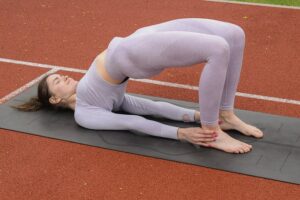
All yoga practices, including āsana, should be practiced with steady attention, ease, and comfort. Please read Qualities of a Yoga Practice for more information.
Some practices to avoid
Below are some physical and breathing practices that are generally thought to be contraindicated when any kind of abdominal organ prolapse is present.
- Avoid jumping in your yoga practice.
- Avoid any posture that compresses the apāna or abdominal region.
- Avoid poses that put pressure on the abdominal area.
- Avoid strong breathing practices like breath of fire and holding the breath after exhale.
- Avoid any poses that bring tension to the abdominal region or that focus on the core in an intense way.
- Avoid practicing mula bandha and uddiyana (If you don’t know what these are don’t worry about it. If you do, set them aside for now. You may be able to return to their practice once the situation has improved.)
Ease and comfort are important steps now. Don’t be surprised if emotions arise of which you were not consciously aware. The 2nd cakra is the seat of emotional nurturing and creativity. And although this is beyond the scope of this writing, I want you to be aware that issues related to this area and the way we operate in the world, (1st cakra) may come up to be processed.
Feel free to contact me for further information or guidance. It is my pleasure to be of assistance.
References
https://www.ncbi.nlm.nih.gov/pmc/articles/PMC2034734/
https://theflowerempowered.com/knowledge-portal/pelvic-organ-prolapse/#ligaments-of-the-uterus
https://theflowerempowered.com/knowledge-portal/pelvic-organ-prolapse/uterine-prolapse/
Mohan, A.G. and Ganesh Dr; Haṭha Yoga Pradīpikā, with notes from Krishnamacharya; Svastha Yoga, 2017
Swami Maheshananda and Dr B.R. Sharma; Jyotsnā, Brahmānanda’s Commentary of Haṭhapradīpikā; Kaivalyadhama Lonalvla, Maharashtra, India, 2011
https://wondermentgardens.com/natural-solutions-for-abdominal-organ-prolapse/
https://wondermentgardens.com/yoga-and-healing-the-concept-of-prana/
Disclaimer
The statements and ideas presented here are not intended to diagnose, treat, cure, or prevent any disease or condition. They have not been evaluated by the FDA. All ideas presented are for the sole purpose of education. To help you take control of your own health. If you have a health concern or condition, consult a physician. We suggest that you always consult a medical doctor before modifying your diet, using any new product, drug, supplement, or doing any new exercises.
These statements and products have not been evaluated by the FDA. They are not intended to diagnose, treat, cure, or prevent any disease or condition. If you have a health concern or condition, consult a physician. Always consult a medical doctor before modifying your diet, using any new product, drug, supplement, or doing any new exercises.
Herbs taken for health purposes should be treated with the same care as medicine. Herbal remedies are no substitute for a healthy diet and lifestyle. If you are serious about good health, you’ll want to combine diet, exercise, herbals, a good relationship with your doctor and a generally healthy lifestyle. No one of these will do it alone.
This information is designed to be used as part of a complete health plan. No products are intended to replace your doctor’s care, or to supersede any of his/her advice or prescriptions.

